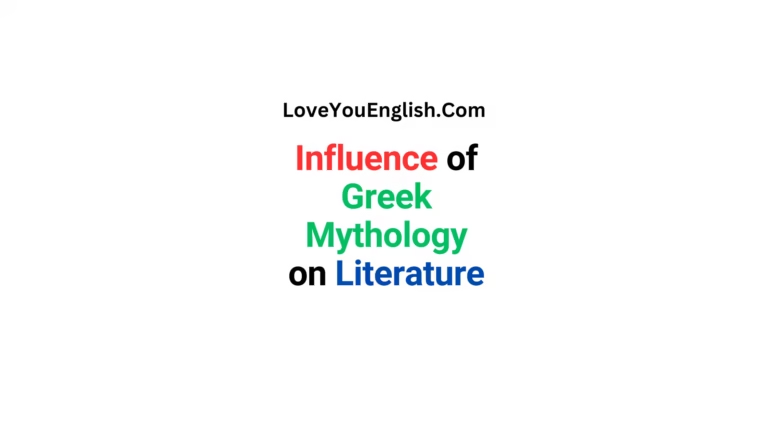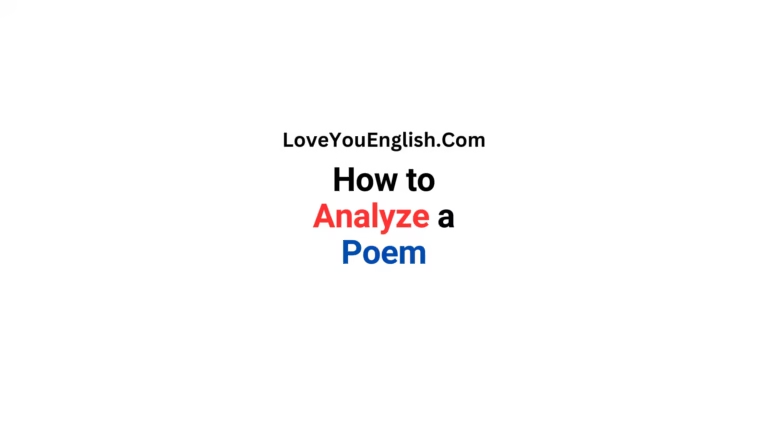The Impact of the Romantic Era on English Literature
Sharing is caring!
The Romantic Era was a significant period in the late 1700s and early 1800s that transformed English literature. It spanned from around 1798 to 1837 and was characterized by a deep emphasis on feelings, the beauty of nature, and creativity.
During this time, some of the most renowned authors in English literature emerged, such as William Wordsworth, Samuel Taylor Coleridge, Lord Byron, Percy Bysshe Shelley, and John Keats.
In this post, I will explain how the Romantic Era influenced English literature and why its effects are still important today.
We will explore the main themes found in Romantic literature, the key authors who contributed to this movement, and how Romanticism continues to impact literature in our modern world.
What Was the Romantic Era?
The Romantic Era was a response to the ideas of the Enlightenment, which emphasized reason, logic, and order. While the Enlightenment thinkers believed in human progress through science and rational thought, the Romantics turned their attention to the emotions, imagination, and the natural world.
Romantic writers felt that society, with its strict rules and industrial growth, was beginning to lose touch with nature and the deeper feelings of the human soul. They wanted to show the power of human emotions and the beauty of nature through their poetry and prose. This movement was also connected to a period of great political and social change, including the French Revolution and the Industrial Revolution, which created a sense of optimism but also brought new challenges to society.
Key Features of Romantic Literature
Romantic literature has some important features that make it different from earlier styles of writing. Here are a few of them:
Emphasis on Feelings: Writers from the Romantic period thought that emotions like love, fear, happiness, and sadness were really important to what it means to be human. They wanted to dive deep into these feelings in their stories, showing how powerful and complicated emotions can be.
Appreciation of Nature: Nature played a huge role in Romantic literature. Authors often used the beauty of the natural world to represent feelings, highlight beauty, and reflect on life. Things like mountains, forests, rivers, and oceans were popular topics in poetry, and nature was seen as a calming and inspiring place.
Imagination and Originality: The Romantics valued imagination a lot. They believed that it could help people break free from the everyday grind and connect with something bigger, whether that was spiritual or emotional. They also used their creativity to invent amazing and magical worlds in their stories.
Defiance of Tradition: Romantic writers often pushed back against the strict rules of earlier literary movements, like Neoclassicism. They didn’t think literature had to stick to rigid guidelines and instead celebrated freedom in how they expressed themselves, both in style and content.
Focus on the Self: Many Romantic writers looked closely at the individual’s inner thoughts and feelings. They were drawn to personal experiences, especially those that were intense, unique, or emotional. This focus on the self also connected to ideas about freedom and expressing oneself.
Important Writers of the Romantic Era
Several key figures shaped the Romantic movement, and their works still influence literature today. Here are a few of the most important:
1. William Wordsworth
Wordsworth is often considered the father of English Romanticism. His most famous work, Lyrical Ballads (1798), written with Samuel Taylor Coleridge, is seen as the beginning of the Romantic movement in English literature. Wordsworth’s poetry focused on nature and the simple, everyday lives of ordinary people. He believed that nature had the power to heal and inspire, and he often used the natural world as a way to express deep emotions.
One of Wordsworth’s most famous poems, I Wandered Lonely as a Cloud, is a great example of his love for nature. In this poem, he describes how a field of daffodils lifts his spirits and fills him with joy.
2. Samuel Taylor Coleridge
Coleridge was a close friend of Wordsworth, and together they helped define the Romantic movement. His poem The Rime of the Ancient Mariner is one of the most famous works of English literature. It tells the story of a sailor who is punished for killing an albatross, and it’s full of supernatural elements and deep philosophical ideas about guilt, redemption, and the power of nature.
Coleridge’s poetry often mixed the real with the imaginary, and he was known for his powerful imagery and imaginative style.
3. Lord Byron
Lord Byron was one of the most famous poets of the Romantic era and known for his rebellious spirit and passionate poetry. His life was as dramatic as his work, and he became a symbol of the Romantic hero—an individual who is independent, emotional, and often at odds with society.
One of his most famous works, Don Juan, is a long narrative poem that blends humor with deep philosophical themes. Byron’s poems often deal with themes of love, loss, and the search for meaning in life.
4. Percy Bysshe Shelley
Shelley was another key figure in the Romantic movement, known for his passionate and idealistic poetry. His works often express his belief in personal freedom, the power of nature, and the need for social change. Shelley was deeply influenced by the political and social revolutions of his time.
One of his most famous poems, Ozymandias, explores the idea of the rise and fall of great civilizations. The poem describes a ruined statue in the desert and reflects on the fleeting nature of power and glory.
5. John Keats
Keats was one of the most talented poets of the Romantic era, and his work is known for its beauty and emotional depth. His poetry often focuses on themes of beauty, art, and the transient nature of life. Keats’s famous odes, such as Ode to a Nightingale and Ode on a Grecian Urn, are filled with vivid images and explore the relationship between beauty and mortality.
Keats’s works express a longing for permanence in a world that is constantly changing. His poetry often reflects a desire to escape from the troubles of everyday life into a world of beauty and imagination.
The Legacy of the Romantic Era
The Romantic Era has had a big impact on English literature, and its influence can still be seen in the works of writers today. Here’s how it has changed the literary scene:
Emphasis on the Individual: The Romantic focus on personal feelings and the individual has shaped how literature is written. Nowadays, many authors explore their characters’ thoughts and emotions, similar to how Romantic writers did.
Connection to Nature: Romantic authors had a deep appreciation for nature and believed it could inspire and heal. This love for nature is still present in many modern literary works, where it often symbolizes peace, beauty, or challenges.
Creativity and Expression: The Romantics valued imagination and creativity, which still affects how writers create their stories. Today’s authors often try out new styles and forms, just like the Romantics did in their time.
Impact on Future Literary Movements: The Romantic movement influenced many later literary styles, including those of the Victorians and Modernists. Writers like Emily Dickinson and Walt Whitman were inspired by the Romantic focus on individuality and deep emotions.
Ongoing Relevance: Themes from the Romantic Era, such as celebrating nature, valuing personal freedom, and searching for beauty and meaning, are still important today. These ideas connect with readers in a world that often prioritizes material things and progress.
Conclusion
The Romantic Era was a period of significant transformation in English literature. Writers from this time moved away from the logical and scientific ideas of the Enlightenment, focusing instead on feelings, nature, and imagination.
They valued the individual and the strength of personal experiences, and their writings still motivate readers and authors today.
The influence of the Romantic Era is still present in literature, as its ideas about nature, emotions, and creativity continue to affect how we view writing and art.
Through the works of poets like Wordsworth, Coleridge, Byron, Shelley, and Keats, the spirit of the Romantics remains alive, reminding us of the beauty and strength found within humanity.
More topics:
- How Historical Events Have Shaped English Literary Themes
- How the Renaissance Shaped English Literature
- English Literature’s Role in Global Storytelling
- The Influence of Colonialism on English Literature
- The Role of English Literature in Preserving Historical Events
Resources:
- Oxford Reference – Literature
https://www.oxfordreference.com/ - The Modern Language Association (MLA)
https://www.mla.org/ - Academy of American Poets
https://poets.org/
Sharing is caring!






